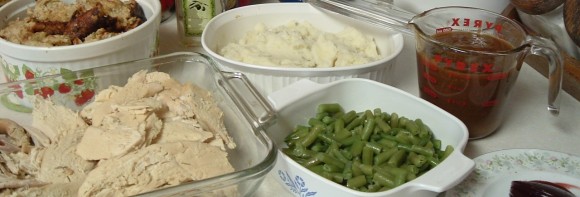Why take the time to make one good meal on the road when you can make two? Or even three? Capitalizing on leftovers is one of the hallmark strategies of the Vagabond Cookbook, and is a clutch way to save money and time while traveling. Simply put, day 1’s boiled rice can become day 2’s [...]
Why take the time to make one good meal on the road when you can make two? Or even three? Capitalizing on leftovers is one of the hallmark strategies of the Vagabond Cookbook, and is a clutch way to save money and time while traveling.
Simply put, day 1’s boiled rice can become day 2’s fried rice. Beef made for a pasta dish for tonight’s dinner can become the meat for tomorrow’s lunch sandwich. A chicken fillet for lunch can easy be chopped up and made into a soup for dinner. I want to spend the least amount of time in the kitchen as possible when on the road. I don’t want to waste moments that could otherwise be put towards exploring interesting places slaving over a stove. So I’ve put together a good leftovers strategy that allows me to cook up multiple meals at once.
Transporting left overs
Another great aspect of leftovers is that they make excellent mobile meals. Just pop that day old food in a tupperware container or a zip-lock baggie, throw it in your day pack, and you have a lunch that you can eat while tramping through a city, the countryside, or out in the mountains. This not only provides you with an easy and quick meal, but saves money, as you will not be dependent on a restaurant for food.
Preserving left overs
When preparing for leftovers having a refrigeration at your disposal is truly an advantage. When in hostels or staying in a furnished apartment, take advantage of that fridge. Refrigerators are not only useful to preserve pre-cooked raw food, but left overs as well. If you can use a fridge the only limit to how many meals you can prepare in one go is the size of your pot.
Some may argue this, but outside of the soggy tropics it’s my experience that cooked meat, rice, noodles etc . . . will last unrefrigerated over night if placed in a sealed container. Ideally, I generally consume unrefridgerated leftovers within 12 hours of cooking them. So if I make something for dinner one night I’ll eat the leftovers for the following breakfast. I would not chance this for more than one overnight though.
Regardless of access to refrigeration, I always keep my leftovers in Tupperware containers or zip-lock baggies. Generally, I go for the Tupperware first, as it has a way longer use duration than a plastic bag, and they can be picked up in just about any department store on the planet.
Leftovers conclusion
Each day, I generally aim to eat one freshly cooked meal that I make myself, one meal of leftovers, and one meal that I get from either a restaurant or put together myself using cold ingredients. I like cooking for myself when on the road, but I don’t want to go through this chore more than once per day. By utilizing leftovers I can turn a single meal into many meals.
This recipe is part of the Vagabond Cookbook.

About the Author: VBJ
I am the founder and editor of Vagabond Journey. I’ve been traveling the world since 1999, through 91 countries. I am the author of the book, Ghost Cities of China and have written for The Guardian, Forbes, Bloomberg, The Diplomat, the South China Morning Post, and other publications. VBJ has written 3703 posts on Vagabond Journey. Contact the author.
VBJ is currently in: New York City


